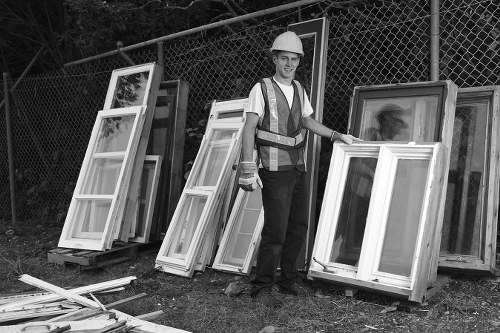Understanding Flat Clearance Bow: A Comprehensive Overview

The concept of Flat Clearance Bow plays a pivotal role in various industries, particularly in transportation and construction. Understanding its intricacies is essential for professionals seeking to optimize space and ensure safety in their projects.
Flat clearance refers to the unobstructed space required for the safe passage of vehicles, machinery, or structural components. When combined with the term 'Bow,' it often relates to areas like Bow in London, where urban planning and space management are critical.
In urban settings, especially in densely populated regions like Bow, effective flat clearance is necessary to maintain the flow of traffic and the functionality of public spaces.

What is Flat Clearance?
Flat clearance is the minimum required space that must be kept clear to allow the safe and efficient movement of various elements within a given area. This concept is widely applied in transportation, construction, and urban planning.
In transportation, flat clearance ensures that buses, trucks, and other large vehicles can navigate roads without hindrance. In construction, it pertains to the space needed for machinery and materials to operate smoothly on a site.
Proper flat clearance planning helps prevent accidents, reduces congestion, and enhances the overall efficiency of operations in any environment.

Importance of Flat Clearance in Bow
Bow, a vibrant area in London, faces unique challenges due to its dense population and limited space. Implementing effective flat clearance strategies is crucial for maintaining the area's infrastructure and supporting its dynamic community.
With ongoing developments and increasing traffic, ensuring adequate flat clearance helps in minimizing disruptions and promoting seamless connectivity. It also plays a role in emergency preparedness, allowing quick access for emergency services when needed.
Moreover, flat clearance contributes to the aesthetic and functional aspects of Bow, making it a more livable and attractive area for residents and visitors alike.

Key Factors Influencing Flat Clearance
- Infrastructure Design: The layout of roads, buildings, and public spaces significantly affects flat clearance requirements.
- Traffic Patterns: Understanding the flow of vehicles and pedestrians helps in determining optimal clearance areas.
- Regulatory Standards: Compliance with local and national regulations ensures that clearance standards are met.
- Environmental Considerations: Natural elements like trees and waterways must be accounted for in clearance planning.
Addressing these factors meticulously ensures that flat clearance is both practical and effective in its application.
Urban planners and engineers must collaborate to integrate these elements seamlessly into their designs.

Challenges in Maintaining Flat Clearance
Maintaining flat clearance in Bow presents several challenges. The high density of buildings and limited open spaces make it difficult to allocate sufficient clearance areas.
- Space Constraints: Allocating space for clearance without compromising on other essential functions is a delicate balance.
- Urban Development: Ongoing construction and development projects can disrupt existing clearance plans.
- Traffic Congestion: High volumes of traffic increase the complexity of managing clearance effectively.
Addressing these challenges requires innovative solutions and adaptive planning to ensure that flat clearance remains effective despite the evolving urban landscape.
Strategies for Effective Flat Clearance
Implementing strategies for effective flat clearance can significantly enhance the functionality and safety of urban areas like Bow.
- Comprehensive Planning: Detailed planning that considers all aspects of urban infrastructure is essential.
- Stakeholder Collaboration: Engaging with community members, businesses, and government entities ensures that clearance plans meet diverse needs.
- Regular Maintenance: Ongoing maintenance of clearance areas prevents obstructions and ensures long-term effectiveness.
- Use of Technology: Leveraging advanced tools and software can aid in precise clearance planning and monitoring.
By adopting these strategies, urban planners can create environments that are both efficient and accommodating for all users.
Continuous evaluation and adjustment of clearance plans are necessary to respond to changing urban dynamics.
Benefits of Proper Flat Clearance
- Enhanced Safety: Clear pathways reduce the risk of accidents and ensure safe movement.
- Improved Traffic Flow: Smooth traffic flow minimizes congestion and travel times.
- Increased Accessibility: Accessible clearance areas support mobility for all individuals, including those with disabilities.
- Economic Efficiency: Efficient clearance areas contribute to the overall productivity and economic health of the area.
These benefits collectively contribute to a more organized and sustainable urban environment.
Investing in proper flat clearance is a proactive measure that yields long-term advantages for communities.
Local Relevance: Flat Clearance in Nearby Areas
Flat clearance practices are not only vital in Bow but also in the surrounding areas. Each nearby locality has its unique features that influence clearance requirements.
- Bromley-by-Bow: Located adjacent to Bow, this area benefits from streamlined traffic flow and enhanced pedestrian pathways.
- Stratford: Famous for the 2012 Olympics, Stratford has implemented extensive clearance measures to manage large crowds and events.
- West Ham: West Ham's urban infrastructure incorporates flat clearance to support its bustling commercial centers.
- Canning Town: As a key transport hub, Canning Town prioritizes flat clearance to facilitate seamless connectivity.
- East Ham: East Ham uses strategic clearance planning to maintain its vibrant markets and residential areas.
- Forest Gate: Forest Gate emphasizes green spaces with clear pathways to promote environmental sustainability.
- Plaistow: Plaistow's residential developments incorporate flat clearance to enhance living standards.
- Mile End: Mile End's cultural venues rely on effective clearance for smooth visitor access.
- Tower Hamlets: The broader borough of Tower Hamlets utilizes comprehensive clearance strategies across its districts.
- Leyton: Leyton's community centers benefit from well-planned clearance areas that support local activities.
- Bethnal Green: Bethnal Green integrates flat clearance in its historic sites to preserve heritage while ensuring accessibility.
- Poplar: Poplar's waterfront areas require specialized clearance planning for both pedestrians and vessels.
- Docklands: Docklands employs advanced clearance techniques to manage its commercial and recreational spaces.
- Cannon Street: Cannon Street's business district relies on effective flat clearance to support its economic activities.
Future Trends in Flat Clearance
The future of Flat Clearance Bow is poised to evolve with advancements in technology and urban planning methodologies.
Smart city initiatives are integrating IoT devices and data analytics to monitor and manage clearance areas in real-time. This allows for dynamic adjustments based on traffic patterns and environmental conditions.
- Automation: Automated systems can detect obstructions and alert authorities promptly.
- Sustainable Practices: Emphasizing eco-friendly materials and designs in clearance planning supports environmental goals.
- Community Engagement: Involving residents in clearance planning fosters a sense of ownership and responsiveness to local needs.
- Flexible Designs: Adaptive clearance designs can accommodate changing urban landscapes and future developments.
Conclusion: The Significance of Flat Clearance Bow
Flat clearance in Bow is more than just a technical requirement; it is a fundamental aspect of creating a safe, efficient, and livable urban environment. By understanding and implementing effective clearance strategies, Bow and its surrounding areas can continue to thrive amidst growth and change.
Investing in flat clearance ensures that infrastructure can support current and future demands, fostering a community that is both resilient and adaptable.
Frequently Asked Questions
1. What is the primary purpose of flat clearance in Bow?
The primary purpose of flat clearance in Bow is to ensure safe and efficient movement of vehicles, machinery, and pedestrians by maintaining unobstructed pathways.
2. How does flat clearance impact urban planning in densely populated areas?
In densely populated areas like Bow, flat clearance is crucial for minimizing traffic congestion, enhancing safety, and supporting the smooth operation of public spaces and infrastructure.
3. What are some common challenges faced in maintaining flat clearance?
Common challenges include space constraints, ongoing urban development, and high traffic volumes, which can complicate the allocation and maintenance of clear pathways.
4. How can technology improve flat clearance management?
Technology, such as IoT devices and data analytics, can provide real-time monitoring and dynamic adjustments to clearance areas, enhancing their effectiveness and responsiveness.
5. Why is community engagement important in flat clearance planning?
Community engagement ensures that the needs and preferences of local residents are considered, fostering a sense of ownership and ensuring that clearance plans are practical and beneficial for everyone.

